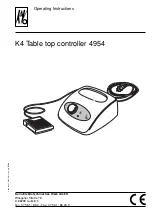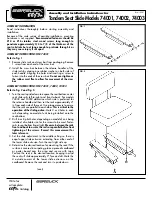
17
c. Testing the grounding resistance
Set the function/range switch to "2000 Ohm" Position, then press "TEST"
button. If the resolution of the reading is not satisfactory, you can change the
function/range switch following the sequence "20000 2000 -200 ".
NOTE
1. Whenever you use fest leads and no matter what kind of fest Iead you use, the fest Ieads
must be separated one from another and every fest Iead must be unwound, otherwise the
reading will be not accurate.
2. All the connections should be good, and the grounding resistances of the auxiliary earth
bare should not be too high, otherwise the reading will be affected,
3. Make sure that bar P1 and bar C1 are driven into damp ground, and all the connections are
good.
3.2 Simple Grounding Resistance Test
This test method is designed to be used only when it is impossible to drive the auxiliary earth
bars into the ground. This test method use a existing earth electrode whose grounding
resistance is very low, such as a metallic water pipe, the common earth connection of a
commercial power system or the earth connection of a building, to substitute the bar C1 and
bar P1.
a. Setting up the connecting
The connecting is indicated in the following flgure:
Waming:
Use caution to avoid electric shock when using a earth connection of a commercial Power
System. Don't use the fester to fest a power switch.
b. Testing the grounding resistance
Set the function/range switch to "2000 Ohm" Position, then press "TEST" button. If the
resolution of the reading is not satisfactory, you can change the function/range
switch following the sequence "2000 -200-20 Ohm"
The actual grounding resistance should be calculated by the following formula:
Rx=RE-re
re: The ground resistance of the common earth connection of a commercial power system (or
the ground resistance of the existing earth electrode which is an auxiliary.)
Re: The ground resistance reading on the display.




































